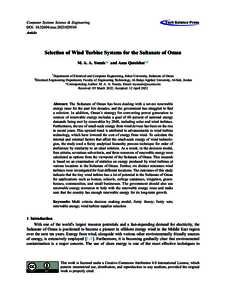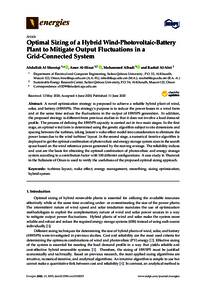وثيقة
Selection of wind turbine systems for the Sultanate of Oman.
المعرف
DOI: 10.32604/csse.2023.029510
المصدر
Computer Systems Science and Engineering. v. 45, 1, p. 343-359
المساهمون
Quteishat, Anas., مؤلف
الدولة
United States.
مكان النشر
Las Vegas
الناشر
Tech Science Press.
ميلادي
2023-01-01
اللغة
الأنجليزية
الموضوع
الملخص الإنجليزي
The Sultanate of Oman has been dealing with a severe renewable energy issue for the past few decades, and the government has struggled to find a solution. In addition, Oman’s strategy for converting power generation to sources of renewable energy includes a goal of 60 percent of national energy demands being met by renewables by 2040, including solar and wind turbines. Furthermore, the use of small-scale energy from wind devices has been on the rise in recent years. This upward trend is attributed to advancements in wind turbine technology, which have lowered the cost of energy from wind. To calculate the internal and external factors that affect the small-scale energy of wind technologies, the study used a fuzzy analytical hierarchy process technique for order of preference by similarity to an ideal solution. As a result, in the decision model, four criteria, seventeen sub-criteria, and three resources of renewable energy were calculated as options from the viewpoint of the Sultanate of Oman. This research is based on an examination of statistics on energy produced by wind turbines at various locations in the Sultanate of Oman. Further, six distinct miniature wind turbines were investigated for four different locations. The outcomes of this study indicate that the tiny wind turbine has a lot of potential in the Sultanate of Oman for applications such as homes, schools, college campuses, irrigation, greenhouses, communities, and small businesses. The government should also use renewable energy resources to help with the renewable energy issue and make sure that the country has enough renewable energy for its long-term growth.
ISSN
0267-6192
قالب العنصر
مقالات الدوريات


